PENTAFLUOROPHENYL DIPHENYLPHOSPHINATE
Synonym(s):Diphenylphosphinic acid pentafluorophenyl ester;FDPP
- CAS NO.:138687-69-1
- Empirical Formula: C18H10F5O2P
- Molecular Weight: 384.24
- MDL number: MFCD00192380
- EINECS: 1308068-626-2
- SAFETY DATA SHEET (SDS)
- Update Date: 2025-09-25 17:15:13

What is PENTAFLUOROPHENYL DIPHENYLPHOSPHINATE?
Chemical properties
White to yellow solid
The Uses of PENTAFLUOROPHENYL DIPHENYLPHOSPHINATE
Pentafluorophenyl Diphenylphosphinate is a reagent used as carboxyl activating group and a coupling agent in variety of amide bond formations.
The Uses of PENTAFLUOROPHENYL DIPHENYLPHOSPHINATE
FDPP can be used as a coupling reagent in the:
- Synthesis of peptides by solid-phase and solution-phase reactions.
- Preparation of macrocyclic peptide cyclotheonamide B as a thrombin inhibitor.
- Cyclooligomerization of N-methylated-L-valine thiazole amino acid to obtain its cyclic tetramers.
- Macrocyclization of an intermediate for the total synthesis of ziziphine N , and for the macrolactamization of precursor in synthesizing cryptophycin D.
What are the applications of Application
Pentafluorophenyl diphenylphosphinate is Catalyst involved in coupling and macrocyclization
General Description
Pentafluorophenyl diphenylphosphinate (FDPP) is a reagent, used as a coupling agent in the amide bond forming reactions without racemization. It can also be employed in the synthesis of dipeptides with high yields and good optical purity. FDPP can be prepared from diphenylphosphinic chloride and pentafluorophenol in the presence of imidazole.
Properties of PENTAFLUOROPHENYL DIPHENYLPHOSPHINATE
| Melting point: | 47-50 °C (lit.) |
| Boiling point: | 413.1±55.0 °C(Predicted) |
| Density | 1.45 |
| storage temp. | Sealed in dry,Room Temperature |
Safety information for PENTAFLUOROPHENYL DIPHENYLPHOSPHINATE
| Signal word | Warning |
| Pictogram(s) |
 Exclamation Mark Irritant GHS07 |
| GHS Hazard Statements |
H315:Skin corrosion/irritation H319:Serious eye damage/eye irritation H335:Specific target organ toxicity, single exposure;Respiratory tract irritation |
| Precautionary Statement Codes |
P280:Wear protective gloves/protective clothing/eye protection/face protection. P302+P352:IF ON SKIN: wash with plenty of soap and water. P304+P340:IF INHALED: Remove victim to fresh air and Keep at rest in a position comfortable for breathing. |
Computed Descriptors for PENTAFLUOROPHENYL DIPHENYLPHOSPHINATE
| InChIKey | OOWSDKUFKGVADH-UHFFFAOYSA-N |
PENTAFLUOROPHENYL DIPHENYLPHOSPHINATE manufacturer
New Products
Indole Methyl Resin tert-butyl 9-methoxy-3-azaspiro[5.5]undecane-3-carboxylate Boc-His(Boc)-OH 2-CTC Resin 4-Chloro-7-tosy1-7Hpyrrolo[2,3-d]pyrimidine 5,7-Dibromo-1H-indole 2,5-dichloro-N-hydroxy-4,6-dimethylpyridine-3-carboximidamide 2,2-Dimethoxy-7-azaspiro[3.5]nonane hydrochloride 4-chloromethyl-5-methyl-1,3-dioxol-2-one (DMDO-Cl) R-2-BENZYLOXY PROPIONIC ACID 1,1’-CARBONYLDIIMIDAZOLE 1,1’-CARBONYLDI (1,2-4 TRIAZOLE) N-METHYL INDAZOLE-3-CARBOXYLIC ACID 4-((2-hydroxyethyl)thio)benzoic acid 1-(TERT-BUTOXYCARBONYL)-2-PYRROLIDINONE Methyl 6-methylnicotinate 3-Pyridineacrylic acid tert-Butyl carbazate TETRAHYDRO-2H-PYRAN-3-OL 2-((4-morpholinophenylamino) (methylthio) methylene) malononitrile 3-(4-morpholinophenylamino)-5-amino-1H-pyrazole-4-carbonitrile 2,4-dihydroxybenzaldehyde 1,3-Diethyl-1,3-Diphenylurea Methyl 2-methylquinoline-6-carboxylateRelated products of tetrahydrofuran



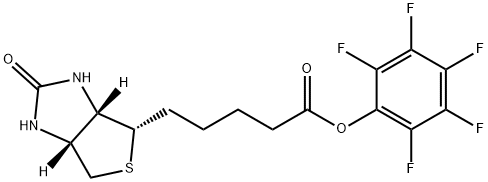
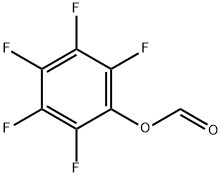
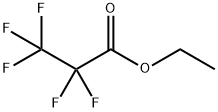
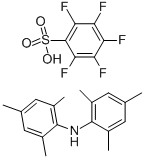
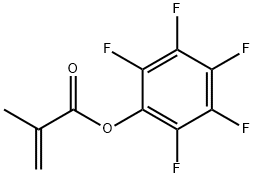
You may like
-
 138687-69-1 PENTAFLUOROPHENYL DIPHENYLPHOSPHINATE Diphenylphosphinic acid pentafluorophenyl ester 98%View Details
138687-69-1 PENTAFLUOROPHENYL DIPHENYLPHOSPHINATE Diphenylphosphinic acid pentafluorophenyl ester 98%View Details
138687-69-1 -
 Pentafluorophenyl Diphenylphosphinate CAS 138687-69-1View Details
Pentafluorophenyl Diphenylphosphinate CAS 138687-69-1View Details
138687-69-1 -
 Pentafluorophenyl diphenylphosphinate 98% CAS 138687-69-1View Details
Pentafluorophenyl diphenylphosphinate 98% CAS 138687-69-1View Details
138687-69-1 -
 Pentafluorophenyl diphenylphosphinate CAS 138687-69-1View Details
Pentafluorophenyl diphenylphosphinate CAS 138687-69-1View Details
138687-69-1 -
 Pyridine 99.5% HPLC /UV SpectroscopyView Details
Pyridine 99.5% HPLC /UV SpectroscopyView Details
110-86-1 -
 Dibutyl PhthalateView Details
Dibutyl PhthalateView Details
84-74-2 -
 Imidazole Spot supply, competitive priceView Details
Imidazole Spot supply, competitive priceView Details
288-32-4 -
 Thiourea 99% ARView Details
Thiourea 99% ARView Details
62-56-6
Statement: All products displayed on this website are only used for non medical purposes such as industrial applications or scientific research, and cannot be used for clinical diagnosis or treatment of humans or animals. They are not medicinal or edible.
